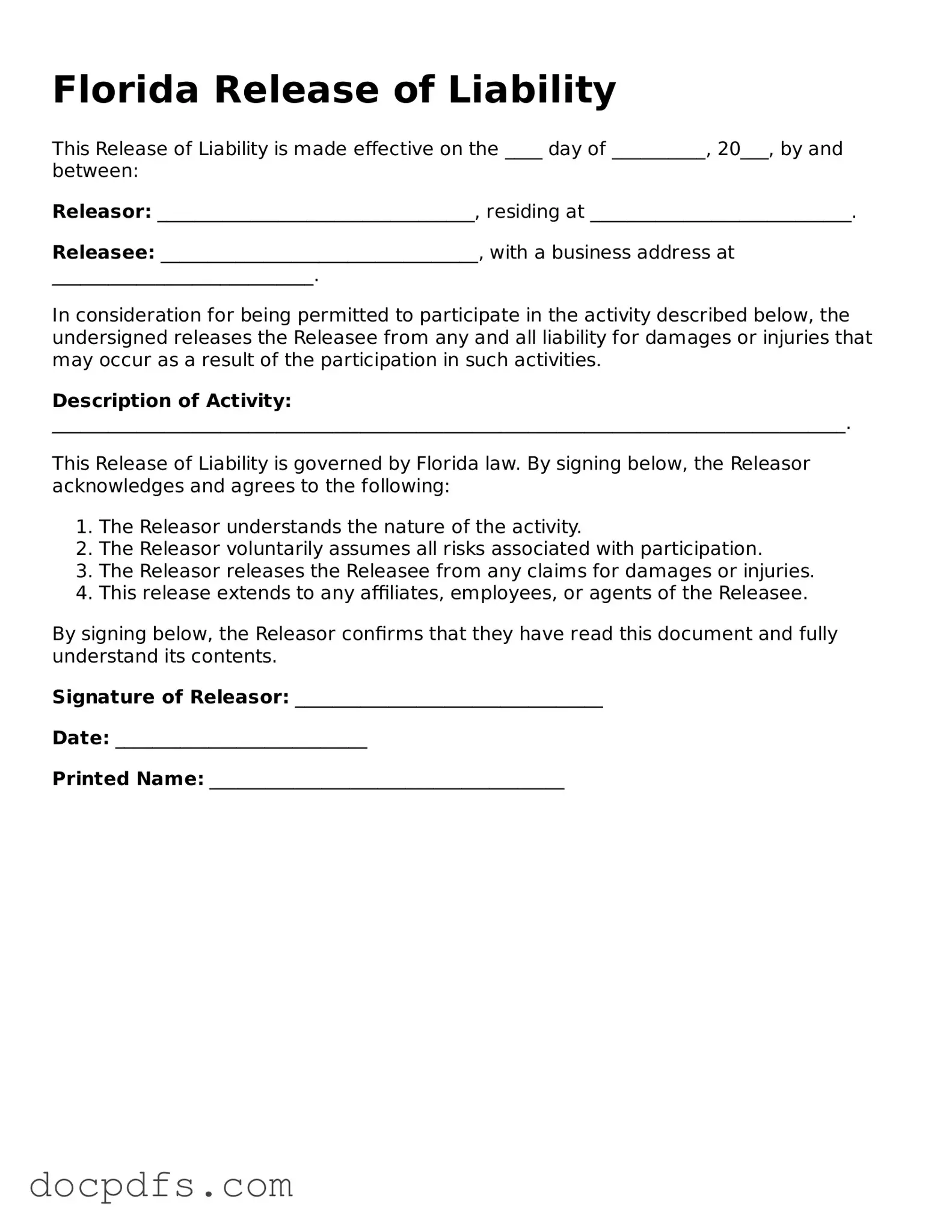A Florida Release of Liability form is a legal document that protects an individual or organization from being held liable for injuries or damages that may occur during a specific activity or event. By signing this form, participants acknowledge the risks involved and agree not to hold the organizer responsible for any accidents or injuries that may arise.
This form is commonly used in situations where there is a potential for injury or harm. Examples include:
-
Sports activities, such as skateboarding, rock climbing, or martial arts.
-
Events like races, fairs, or festivals.
-
Recreational activities, including boating, zip-lining, or horseback riding.
Using this form helps ensure that all participants are aware of the risks and agree to waive their right to sue in case of an accident.
Yes, a properly drafted and signed Release of Liability form can be legally binding in Florida. However, certain conditions must be met for it to be enforceable. The form should be clear, concise, and explicitly state the risks involved. Additionally, it should be signed voluntarily, without coercion, and by individuals who are of legal age or by their guardians if they are minors.
Minors cannot legally sign contracts, including a Release of Liability form. Instead, a parent or legal guardian must sign on behalf of the minor. This ensures that the minor's interests are protected while still allowing them to participate in activities that may require a waiver.
If you choose not to sign the form, you may be prohibited from participating in the activity or event. The organizer needs to protect themselves from potential lawsuits, and without your signature, they cannot ensure that you understand the risks involved. It is essential to read and understand the form before deciding whether to participate.
Are there any exceptions to the Release of Liability?
While a Release of Liability form can protect organizers from many claims, there are exceptions. For instance, if negligence or intentional wrongdoing is proven, the form may not provide protection. Additionally, certain activities may be subject to specific regulations that limit the enforceability of liability waivers. Always consult a legal professional if you have concerns about the validity of a release in specific circumstances.
To make sure your Release of Liability form is effective, consider the following tips:
-
Use clear and straightforward language to explain the risks involved.
-
Include a section where participants acknowledge they understand these risks.
-
Ensure that the form is signed voluntarily and dated.
-
Consult with a legal professional to ensure compliance with Florida laws.
Taking these steps can help protect both the organizer and the participants involved.
